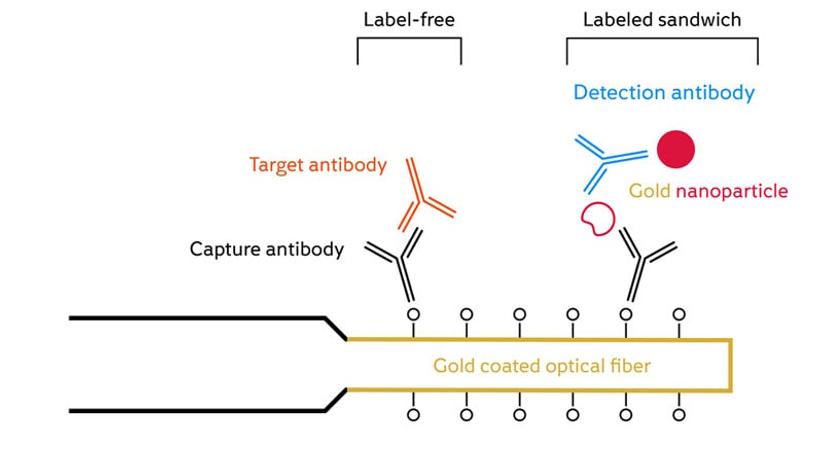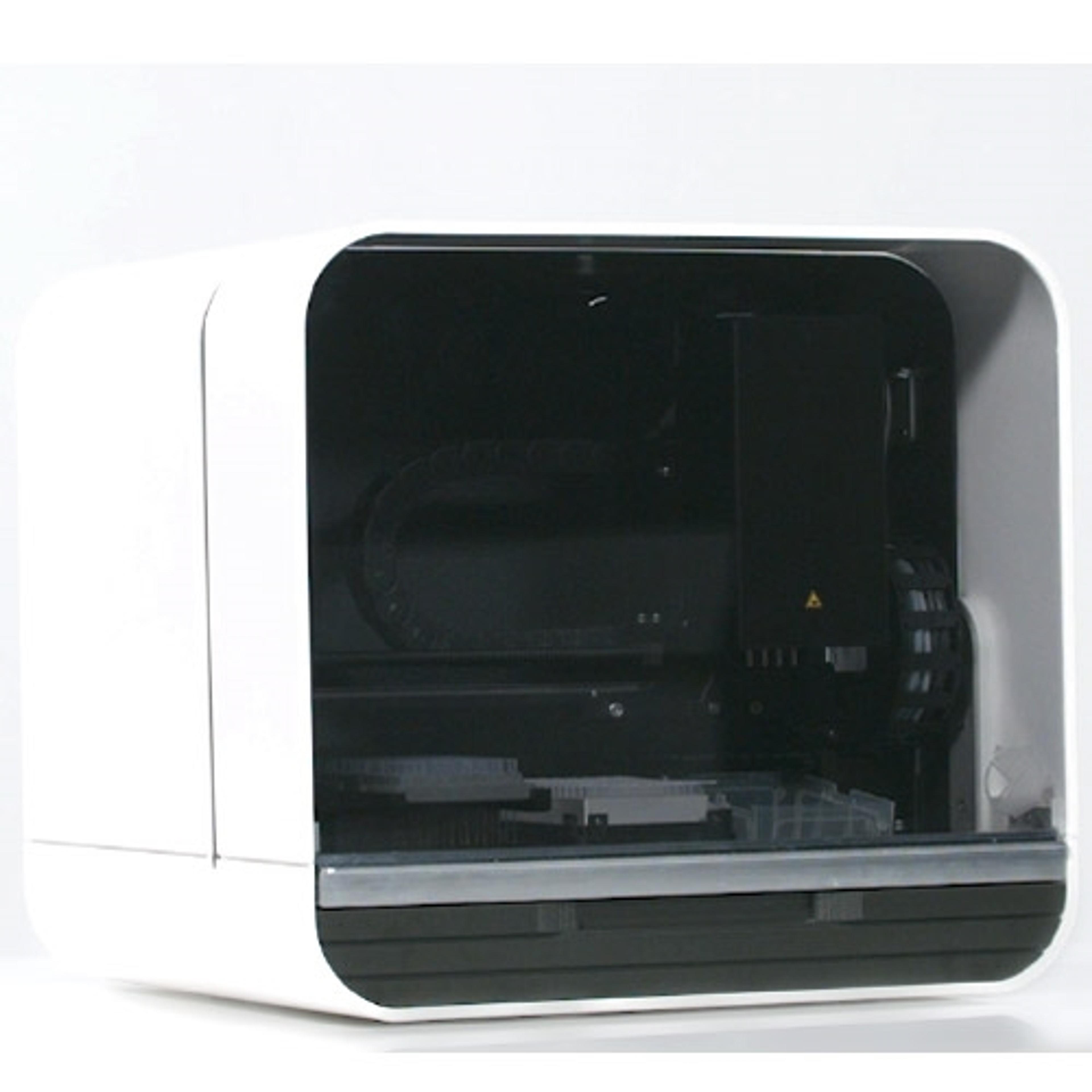Fiber-optic surface plasmon resonance (FO-SPR) combines the accuracy, precision and speed of surface plasmon resonance with the ease-of-use of a dip-in sensor
18 Mar 2021
Fiber-optic surface plasmon resonance is a technique that was developed in the MeBioS (Mechatronics, Biostatistics, and Sensors) division at the University of Leuven in Belgium. It uses fiber-optic probes to upgrade the well-established surface plasmon resonance technique for bioanalysis, allowing sensors to be dipped into the sample, greatly improving the ease of use.
FO-SPR has been honed by FOx Biosystems, a spin-off company from MeBioS, and integrated into their flagship instrument, the White FOx. This enables users to generate high-quality, cost-effective biomolecular data, fast, and over a wide range of applications, even in the most challenging samples.
Below are some of the benefits of this approach.
Surface plasmon resonance (SPR)
SPR delivers fast, precise, and accurate information about biomolecular interactions without the need for labels. It can provide data on target concentration, affinity, and kinetic interactions, and is commonly used for a wide range of purposes, including protein and antibody characterization, biologics development, therapeutic drug monitoring, allergen testing in food, etc.
However, the majority of microfluidics-based SPR platforms are cumbersome to use, requiring time-consuming sample preparation or large quantities of precious sample. FO-SPR overcomes these obstacles by allowing the sensors to be simply dipped into the sample, providing a user-friendly, versatile system with minimal sample requirement.

Figure 1. Surface plasmon resonance for biomolecular interaction analysis. SPR can be used to determine the mass on the sensor surface by measuring the intensity of reflected light at the interface layer. A change in mass on the surface, for example, due to an immobilized capture antibody binding an antigen, produces an altered spectrum, providing real-time information about binding and dissociation curves.
Dip-in probes
Fiber-optic SPR probes can simply be dipped into the sample of interest. This allows users to benefit from the speed and precision of SPR analysis while providing additional advantages such as ease of use and the wide range of potential analyses that can be carried out.
- Fluidics-free: none of the clogging or cleaning associated with microfluidics systems
- Simple to use: samples can be analyzed directly in a microtiter plate or PCR tubes
- Reduced sample processing: the fluidics-free configuration means that complex samples like whole blood can be used directly
- No sample wastage: low sample volumes are required and analysis is non-destructive
- Standard surface chemistry: a wide range of compounds can be immobilized on the probe surface, including antibodies, proteins, phage, microvesicles, and DNA

Figure 2. FO-SPR interchangeable dip-in probes. The fiber-optic probes are dipped into the sample, meaning that low volumes of sample can be analyzed with minimal processing or waste.
Fast SPR signal amplification
Using gold nanoparticles coated with antibodies, sandwich assays can be carried out without the lengthy enzymatic incubations required by ELISA. This instantly amplifies the SPR signal, while providing the same sensitivity as ELISA. While microfluidic systems suffer from cross-contamination when using strong signal enhancement reagents like gold nanoparticles, the fiber optic dip-in read assay overcomes these issues, thereby avoiding the need for extensive cleaning procedures.

Figure 3. Sandwich bioassays on FO probe surface. FO-SPR can either be used in standard bioassays that provide real-time, label-free data (left) or gold nanoparticle sandwich assays to boost the sensitivity and speed of the surface plasmon resonance signal (right).
Flexible use
The standard surface chemistry and interchangeable nature of the probes mean that FO-SPR is a highly versatile technique, capable of analyzing a wide range of targets on one instrument.
This versatility of use places high demands on the software, making software an important part of the FO-SPR package. The open data format offers users the ability to perform data analysis with standard data-handling software, which provides the freedom to analyze data in a personalized manner. Furthermore, an intuitive, visual interface makes it simple to set up, adapt and save protocols, depending on the assay requirements.
Main features of FO-SPR:
- Based on the surface plasmon resonance (SPR) sensing principle
- Fast, accurate, precise quantitative results
- Sensitive
- µM to nM label-free
- pM to fM using ultra-fast gold nanoparticle sandwich assays
- Easy-to-use, dip-in sensor
- Fluidics free: no cleaning, no clogging
- No sample prep and reduced hands-on time
- Only 140 µL required for measurement
- Compatible with PCR microtiter plates and low volume PCR strips
- Parallel sensing probes increase speed
- Easy protocol switching
- Multiple targets analyzed with one device
The White FOx is ready for any high-tech lab, watch it in action here >>
Do you use FOx Biosystems products in your lab? Write a review today for your chance to win a $400 Amazon Gift Card>>


